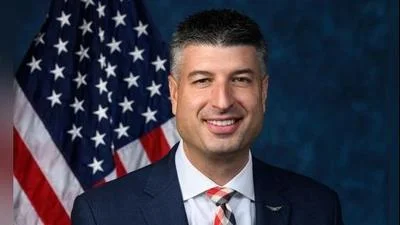Interim President Teresa K. Woodruff, Ph.D. | Michigan State University
Interim President Teresa K. Woodruff, Ph.D. | Michigan State University
Municipal water systems across the United States are now required to eliminate "forever chemicals" from tap water under a new rule by the Environmental Protection Agency (EPA). This initiative aims to prevent health issues associated with per- and polyfluoroalkyl substances (PFAS), which are found in everyday items such as nonstick cookware and firefighting foams. The Biden Administration announced that this measure will reduce PFAS exposure for approximately 100 million people.
Michigan State University (MSU) researchers have been at the forefront of addressing PFAS concerns. In 2020, MSU established its Center for PFAS Research, involving over 30 scientists from nine colleges who study various aspects of PFAS contamination. Their work includes measuring and monitoring PFAS levels, researching health impacts on wildlife and humans, exploring remediation methods, and developing safe alternatives.
Cheryl Murphy, director of the MSU Center for PFAS Research, stated: “The new PFAS regulations suggest that PFOS (perfluorooctanesulfonic acid) and PFOA (perfluorooctanoic acid) and a few other chemicals should not be detected in drinking water because the limits are set at detection limits. This regulation suggests that measurable levels are unsafe for human consumption."
A. Daniel Jones from MSU commented: “This action by U.S. EPA represents a big step forward by establishing a national standard for regulating levels of some PFAS chemicals in public drinking water systems."
Muhammad Rabnawaz highlighted the need for safe alternatives: “To comply with new EPA ruling, we will need safe alternatives for PFAS in all sectors including packaging."
Amber L. Pearson emphasized health benefits: “This recent ruling on these forever chemicals is an important first step to address water safety for communities impacted by PFAS.”
Courtney Carignan noted: “The federal maximum contaminant levels, or MCLs, will help assure equitable access to safe drinking water for over 100 million Americans affected by PFAS contamination."
Hui Li remarked on broader implications: “The EPA has finalized the maximum contaminant level for six commonly used PFAS chemicals... However, there are thousands of other PFAS chemicals widely present in the environment.”
Maria Lapinski discussed communication responsibilities: “Given the proliferation of chemicals in our environment like PFAS... governments that regulate them have a responsibility to communicate the risks and benefits of these substances in an effective manner.”
Brad L. Upham described it as a significant development: “The EPA’s new ruling establishing a national standard... is a welcomed and overdue effort in reducing exposure to these toxic ‘forever’ chemicals.”





 Alerts Sign-up
Alerts Sign-up